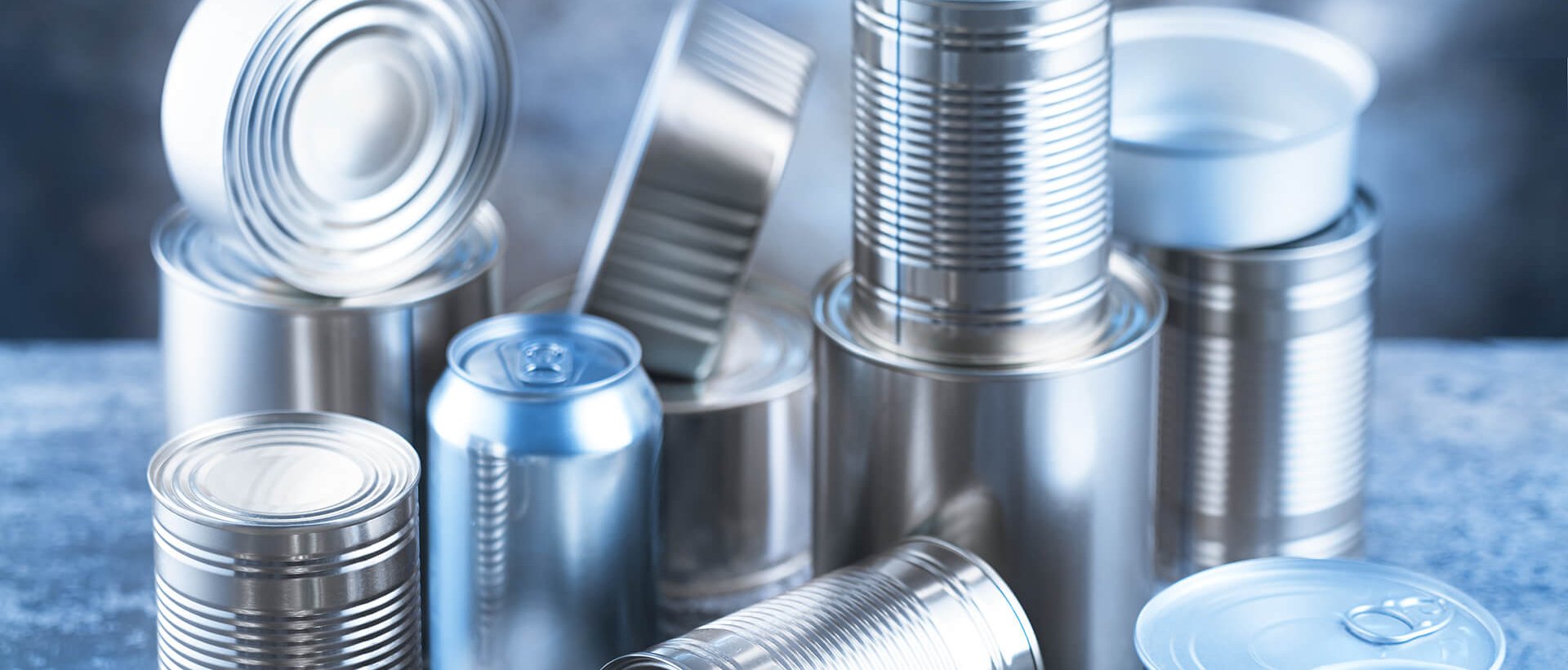- Additives
- Instruments
Frequently asked questions for
Here are some of the most frequently asked questions with their answers from Can Coatings.

Solvent borne systems
BYK-088 is a very universal silicone defoamer which shows excellent defoaming in epoxy/phenolic gold lacquers as well as in polyester based coatings. Only low dosages are needed to achieve perfect results.
BYK-057 is especially suitable for polyester formulations. This defoamer is polymer based and helps to achieve good defoaming properties in can coating formulations.
Water-based system
For water-based formulations it is recommended to test BYK-1640. To incorporate BYK-1640 into the system medium shear forces are needed. BYK-1640 is an effective defoamer and only low dosages are needed to achieve good defoaming of water-based formulations.
To achieve highest hardness and lowest coefficient of friction values it is advised to use a combination of low melting wax such as carnauba or microcrystalline and a polyethylene wax additives.
Solvent borne systems
Carnauba wax additives such as CERACOL 79 or CERACOL 605 have a melting point around 85°C and melt during the curing process. Microcrystalline wax additives such as CERACOL 610 or CERACOL 615 have a melting point around 90°.
Both wax additives will form a layer in the coating/air interface and ensure low coefficient of friction values.
To maximize the hardness of the paint the combination with a second harder component is necessary. Polyethylene wax additives such as CERAFLOUR 991 have a higher melting point compared to Carnabau wax additives. This benefits in higher hardness values (e.g. Sheen or Clemen hardness) and in improved scratch resistance.
Aqueous systems
For aqueous systems, we advise to test AQUACER 1547. This oxidized PE emulsion ensures very high hardness values and shows good reduction of coefficient of friction. Due to its very fine particle size it has no negative impact on the gloss, haze & clarity of the coating
Please contact us via our contact form regarding your request. We are more than happy to provide recommendation charts especially for BPA free coating systems.
Especially at high curing temperatures polyether modified silicone additives should only be used carefully. A polyester modified silicone additives such as BYK-310 is the most suitable additive for this application. BYK-310 is an active silicone additive which provides a strong reduction of the liquid surface tension. Perfect leveling and good substrate wetting can be achieved using small dosages. It is advised to start with a dosage of 0.2% delivery form on total formulation. And test a dosage ladder from this starting point.
The additive should be added at the latest possible stage of the paint production and incorporated under low stirring. Migration should be tested.
Our portfolio contains additives which are compliant with various food contact regulations such as Regulation (EU) No. 10/2011, 21 CFR 175.300 ‘Resinous and polymeric coatings’ or GB9685-2016, table A.2 ‘Coatings’.
Following this link (https://www.byk.com/de/regulatory-affairs/lebensmittelkontakt.html) you will find food contact notifications of all relevant products.
In case you need further information please contact us via our contact form.
In case you want to avoid silicone based additives we recommend wax additives. Wax additives are available in solid form (micronized) and as dispersions. To achieve scratch resistance we recommend using a polyethylene wax additive or lanoline based wax additives. Suitable products are CERACOL 604 (PE alloy micronized) or CERACOL 609 N (modified lanoline dispersion). Wax additives contain particle whereas silicone additives are polymers. In case wax additives are used the gloss level should be checked.
In order to overcome the substrate wetting problem the surface tension of the liquid coating needs to be reduced. There are two options: a) Silicone solution: Please try one of our solvent borne silicone based additives such as BYK-333 or BYK-307. These products will give you a significant reduction of surface tension. We recommend a starting dosage of 0.1 – 0.2% delivery form on total formulation. Other products are available. Second option is b) silicone free: BYK-399 is a silicone free polymeric levelling additive that gives you a slight reduction of surface tension. But this slight reduction is very often already enough to overcome substrate wetting problems. Please try 0.3 to 0.5% delivery form on total formulation.
Please test BYK-3410. This product is silicone free and fully compliant to FDA 175.300. By reducing the surface tension of the liquid paint it will improve the substrate wetting. It can be post added.
Please visit our website using the following link. Here you can find many information and in addition contact data in case you need additional or different information from our experts.
Please test CERAFLOUR 994 in a dosage of 3-4% on total formulation. It is a micronized product but can still be incorporated easily with medium shear force.
In this case wax additives and silicone based additives can be the solution. Both improve surface slip significantly. Wax additives need to be used in dosages between 0.3% and 0.5% solid wax on total formulation where as silicones already give a good improvement in very low dosages starting from 0.05% solid additive on total formulation. Many waxes are fully compliant to FDA 175.300, silicone based additives often are not (fully) compliant to FDA 175.300 but can be used up to a maximum dosage based on migration studies or non migration principle. In that case please contact us to calculate this dosage. As wax additive we recommend to test CERACOL 609 N. It is a modified Lanoline wax in dispersion form. The dispersion form makes it very easy to be incorporated into the coating. Other wax additives are available, also micronized 100% products. If silicones are preferred we recommend testing BYK-313. In terms of FDA 175.300 it can be used up to 0.5% delivery form on total formulation. Migration needs to be checked in case BYK-313 or other silicones are used. With wax additives migration will not occur.
If you delete your search history, all your previous searches will be deleted permanently.